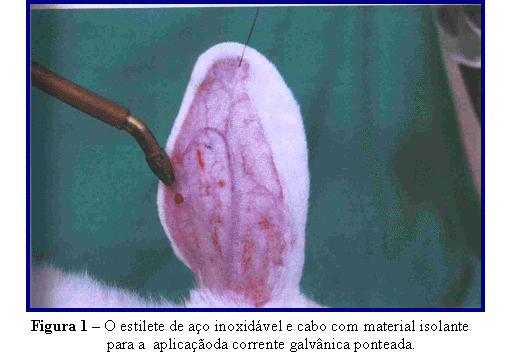Telangiectases, in accordance with current concepts, must be treated in a surgical way. The most commons surgicals treatments included the electrosurgery, electocauterization and electrolysis. The injury to the peripherical dermal tissue was a problem as the insatisfactory results in the vessels scleroses. Therefore, the aim of this study was estimated the value of one electrical device planned with care and exactness to provide a galvanic electric sharp stream to be used in a animal model. Thus, 45 white New Zealand adults male rabbits received a electrical galvanic pulse(marginal vein of the right ear) or only the mechanical puncture(marginal vein of the left ear) in three consecutives times at first, second and third weeks. The animals of group I (n=15) received doses of 100m A, group II (n=15) doses of 200m A and group III(n=15) doses of 300m A. Fourteen days after the last application the redness, exudates and ulcers in skin was evaluate.Samples of the vessels and peripherical skin was prepared and stained with hematoxylin-eosin for leukocyte exudates and granulation tissue. Both, electric and mechanical treatment showed no statistical differences,actually the galvanic eletric sharp stream was ineffective to produce sclerosis in the vessels. Another survey, probably using an stronger eletric flow or different means of study, must be provide.
Rabbits; Sclerotherapy; Sclerosis








